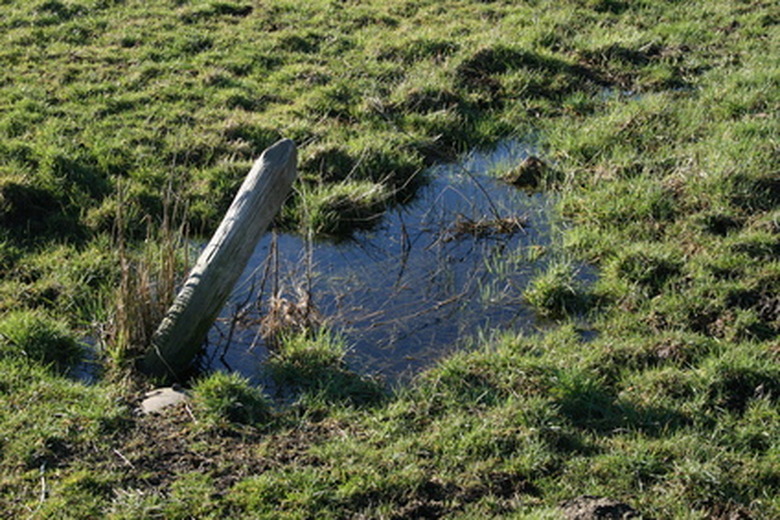How To Fix Drainage In A Low Area Of A Yard
Things Needed
- Sod cutter
- Shovel
- Rototiller
- Rake
- Sod roller
- 1-inch gravel
- Corrugated drain pipe
- Coarse sand
- Topsoil
- Sod
A low area of the yard can create several drainage problems. Water that pools in the low area of a yard can kill grass and landscaping plants. Additionally, the water that does not run off can leech into your soil and drain into your basement. Fortunately, there are several methods that can fix drainage problems in low areas of a yard.
Regrade Your Lawn to Remove Low Spots
Step 1
Remove grass plants and roots using a sod cutter. Remove topsoil with a shovel.
Step 2
Break up the subsoil by running a rototiller over the soil in two directions. Rake the soil to even out high and low places. Then gradually slope the lawn away from your home. Your property should fall away from your home at a rate of 2 to 3 inches per 10 feet, and should end at a point that is level with the street or sidewalk.
- A low area of the yard can create several drainage problems.
- Water that pools in the low area of a yard can kill grass and landscaping plants.
Step 3
Spread 2 inches of topsoil over the subsoil and use a rototiller to mix the two. Then spread 4 inches of topsoil over the subsoil. Rake the soil even and cover with sod.
Step 4
Pass a sod roller over the sod to force the sod's roots into the soil. Water up to four times daily for the first 10 days to establish roots. Then gradually taper your watering sessions until you are watering your grass at a rate of 1 inch every 10 days.
French Drain
Step 1
Dig a trench with a shovel that extends from the low part of your yard at a downward slope into a drainage ditch or sewer drain. The trench should be 6 inches wide and 24 inches deep with steeply sloping sides.
- Spread 2 inches of topsoil over the subsoil and use a rototiller to mix the two.
Step 2
Fill the bottom 3 inches of the ditch with 1-inch gravel. Lay corrugated drain pipe over this. Cover with 6 inches of gravel. Cover gravel with 6 inches of sand. Cover sand with topsoil.
Step 3
Place mats of sod over the topsoil to hide the trench.
Step 4
Roll over the sod to force the roots into the topsoil. Water sod up to four times daily so that it remains saturated for 10 days. Then taper off so that you water the sod only as frequently as the rest of your lawn.
- Fill the bottom 3 inches of the ditch with 1-inch gravel.
- Cover with 6 inches of gravel.
